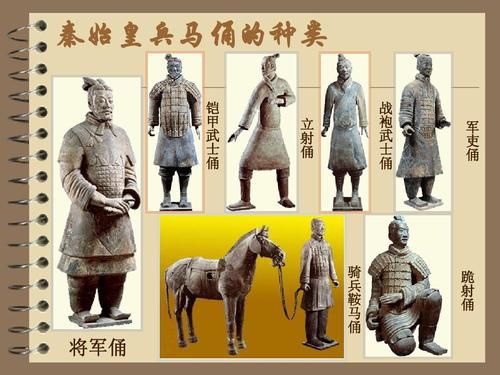
What Types of Warriors Are in the Terracotta Army?
The Terracotta Army is one of the most significant archaeological discoveries of the 20th century. The army, which was buried with the first emperor of China, Qin Shi Huang, in 210-209 BCE, consists of thousands of life-sized terracotta figures. These figures were meant to protect the emperor in the afterlife and provide him with an army to command. The figures vary in height and dress according to their rank and roles, showcasing the complexity and hierarchy of the Qin army.
Types of Terracotta Warriors
The figures are of these general types:
1. Armored Infantry
These are the most numerous type of warrior in the Terracotta Army. They are easily identifiable by their armor, which consists of a helmet, breastplate, shoulder guards, and leg protection. The level of detail on the armor is remarkable, with some suits featuring hundreds of individually crafted scales. Armored infantrymen typically carry weapons such as swords, spears, or halberds, showcasing their readiness for close combat.
2. Unarmored Infantry
In contrast to their armored counterparts, these figures are depicted wearing simple robes instead of armor. They are thought to represent lightly equipped troops responsible for support roles like carrying supplies or building fortifications. Their presence highlights the diverse functions and logistical needs of a vast army like the Qin's.
3. Cavalrymen
These mounted warriors are distinguished by their distinctive pillbox hats and shorter, more practical armor that wouldn't hinder horseback riding. They are depicted alongside terracotta horses, many of which are equally lifelike and anatomically accurate as their riders. Cavalrymen were a vital part of the Qin army, providing speed and maneuverability on the battlefield.
4. Chariot Drivers
These warriors are easily recognizable by their helmets, which often feature a high crest or plume. They wear heavier armor than cavalrymen, designed to protect them during chariot warfare. They are usually depicted holding the reins of the chariot and were responsible for driving the horses while another soldier on the chariot engaged in combat.
5. Spear-Carrying Charioteers
These figures are positioned within the chariots and are armed with long spears. They are responsible for the offensive capabilities of the chariot unit, using their spears to attack enemy formations. The coordination between the driver and the spear-carrying charioteer was crucial for the effectiveness of the chariot in battle.
6. Kneeling Crossbowmen
These archers are shown in a kneeling position, ready to fire their crossbows. They wear armor for protection and represent a specialized unit in the Qin army. Crossbows were a relatively new technology at the time, and their inclusion highlights the Qin army's adoption of advanced weaponry.
7. Standing Archers
Unlike the kneeling crossbowmen, these figures are depicted standing upright while holding bows. They are typically unarmored and represent a more traditional form of ranged combat in the army. The difference in posture and equipment suggests varying tactical roles and deployments for archers in the Qin military doctrine.
8. Generals and Other Officers
These figures are distinguished from the other warriors by their more elaborate armor, often adorned with intricate designs and symbolic motifs. They are usually depicted carrying swords or staffs, signifying their leadership roles. The variety in their postures and expressions suggests individual personalities and command styles.
The Significance of the Variety
The wide variety of figures in the Terracotta Army is not merely decorative but reflects the complex organization and military strategy of the Qin army. It provides a unique window into the military practices, social hierarchy, and artistic traditions of ancient China. Each type of warrior, with its specific equipment and stance, tells a story about the army's structure, tactics, and the importance of these roles in achieving military success during the Qin dynasty.
Q&A
Q: What is the purpose of the Terracotta Army? A: The Terracotta Army was meant to protect the first emperor of China, Qin Shi Huang, in the afterlife and provide him with an army to command.
Q: Why are the Terracotta Warriors different? A: The Terracotta Warriors differ in height, uniform, and hairstyle to signify their rank and role within the army.
Q: What can we learn from the Terracotta Army? A: The Terracotta Army offers valuable insights into the military strategies, weaponry, and social structure of ancient China during the Qin Dynasty.